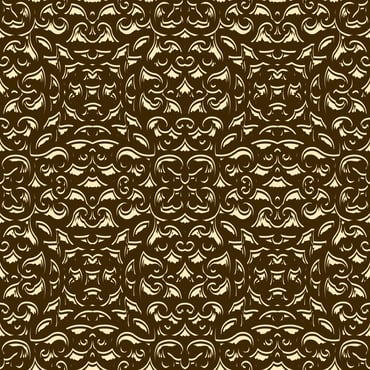Share this
Common Foil Embossing Challenges and Defects
by Luminite on Feb 28, 2022 3:12:50 PM
As more and more products are launched in the market, marketing teams have put more resources into branding their products.

Through innovative and unique designs, branding experts have challenged the way products are packaged and presented. From food and drink packages to luxury goods presentations, embossing (and debossing) has become a popular way to brand packages. And while embossing and debossing can be done on several types of substrates, one of the most common is foil.
Not to get confused with foil stamping (commonly referred to as foil embossing), in which foil is stamped onto and adheres to whatever substrate is being used; blind foil embossing is the process of using male and female cylinders to press an image, logo, or layout into foil, creating a 3-dimensional design without the use of inks or pigments.
While the concept may sound simple, large-scale embossing runs can be plagued with defects ranging from uneven pressure to fuzzy intricate details, here are a few of the most common defects found while embossing foil:
Common Foil Embossing Defects
Embossing on a foil substrate can present its own set of complex challenges to press operators, and it’s important to know how to handle these defects as they arise.
Foil embossing relies on several pieces of machinery interacting perfectly together to press the design onto the substrate. Defects can arise due to design issues with the cylinders, press malfunction, or press operator error:
Defect: Design Issue with Cylinder
Because blind embossing doesn’t use ink or pigments to raise up a design like die or foil stamping, this type of embossing relies heavily on the natural highlights and shadows to raise or lower designs onto foil. Because of this, complex designs and details can sometimes be hard to recognize. Intricate portions of the design or logo may appear less noticeable than others, causing issues with the entire process.
Solution: Work with your Image Carrier Service to Run Tests
When working on the design for your next embossing run, it’s important to have your image carrier service produce test embossing runs to check the effectiveness and quality of your designs.
State-of-the-art image carrier services test embossing cylinders for any design flaws or unrecognizable areas. These proofs are then sent back to the customer and any changes can be made prior to the final cylinder production. Working closely with your image carrier service will save time and money by catching any defects in the design phase versus having to order brand new cylinders.
Defect: Uneven Pressure:
Uneven pressure can cause portions of the embossed element to be too deep or too shallow. Typically this happens when bearer bars aren’t built into the plates or cylinders being used in the embossing.
Solution: Work with your Image Carrier to Incorporate Bearer Bars
When working with your image carrier, it’s important to build in bearer bars to your design to reduce bounce when operating at high speeds.
Defect: Press Malfunction or Press Operator Error
As with any sleeve, taking special care during transportation and when handling is of paramount importance to keep the integrity of your sleeve intact. Dropping, bumping, or otherwise mishandling embossing cylinders can cause alignment issues, low marks, and other issues with your embossing jobs.
When working with malleable substrates like foil, press settings also need to be double-checked to ensure the proper pressure is being applied and that the substrate is clear of any debris or foreign materials.
Solution: Handle Sleeves and Operate Presses with Care
Just as you’d protect a brand new car, take special care of your embossing cylinders when handling outside of the press. The slightest of bumps or drops can cause serious issues and defects to populate throughout your jobs.
Also, double-check your press and press settings prior to running a job in order to ensure the pressure is dialed in and the pathway for your substrate is free of any extraneous materials.
Dealing With Embossing Challenges? Trust the Experts
Dialing in on embossing defects can be challenging. If your image carriers are not producing adequate designs and you’ve gone through the steps to ensure your press is operating correctly, it may be time to switch image carrier services.
 Work with an image carrier manufacturer that has not only proven experience creating embossing cylinders and plates, but also one that will test your design and send proofs prior to creating the final cylinders. Working with these state-of-the-art manufacturers will ensure you’re receiving the highest-quality product possible.
Work with an image carrier manufacturer that has not only proven experience creating embossing cylinders and plates, but also one that will test your design and send proofs prior to creating the final cylinders. Working with these state-of-the-art manufacturers will ensure you’re receiving the highest-quality product possible.
Have questions on Luminite's Image Carrier services? Click below to contact us today.
Share this
- Flexographic Printing (81)
- Image Carrier (28)
- Elastomer sleeves (27)
- Ink Transfer (25)
- Quality (22)
- Flexo sleeve (20)
- News (18)
- printing defects (18)
- flexo printing defects (17)
- sustainability (13)
- Flexo Troubleshooting (12)
- Ink (12)
- Digital Printing (10)
- Flexo 101 (10)
- Flexo Inks, (9)
- Anilox (7)
- Blister Packaging (7)
- Cost (6)
- print misregistration (6)
- regulations (6)
- Corrugated Printing (4)
- pinholing (4)
- "Tradeshow (3)
- Digital Flexo (3)
- Gravure Printing (3)
- Insider (3)
- Load-N-Lok (3)
- Wide Web (3)
- direct laser engraving (3)
- flexo-equipment-accessories (3)
- gear marks (3)
- halo (3)
- testing (3)
- Narrow Web (2)
- bridging (2)
- feathering (2)
- filling in (2)
- mottled image (2)
- pressure (2)
- Labelexpo (1)
- dirty prints (1)
- doughnuts (1)
- embossing (1)
- kiss impression (1)
- October 2023 (2)
- September 2023 (1)
- August 2023 (1)
- July 2023 (3)
- June 2023 (1)
- May 2023 (5)
- April 2023 (1)
- March 2023 (2)
- February 2023 (1)
- January 2023 (3)
- December 2022 (1)
- October 2022 (3)
- September 2022 (2)
- August 2022 (2)
- July 2022 (3)
- May 2022 (1)
- April 2022 (4)
- March 2022 (2)
- February 2022 (5)
- January 2022 (7)
- December 2021 (1)
- November 2021 (3)
- October 2021 (2)
- September 2021 (1)
- August 2021 (1)
- July 2021 (3)
- June 2021 (1)
- May 2021 (4)
- April 2021 (4)
- March 2021 (4)
- February 2021 (2)
- December 2020 (1)
- November 2020 (1)
- October 2020 (2)
- September 2020 (1)
- August 2020 (3)
- July 2020 (2)
- June 2020 (3)
- May 2020 (1)
- April 2020 (1)
- November 2019 (3)
- October 2019 (1)
- August 2019 (1)
- July 2019 (1)
- April 2019 (1)
- March 2019 (1)
- January 2019 (1)
- October 2018 (2)
- August 2018 (1)
- July 2018 (1)
- June 2018 (1)
- February 2018 (2)
- October 2017 (1)
- September 2017 (2)
- January 2016 (1)
- February 2015 (1)
- January 2015 (1)
- December 2014 (2)
- September 2014 (1)
- February 2014 (1)
- January 2014 (1)
- December 2013 (3)
- October 2013 (1)
- September 2013 (1)
- June 2013 (1)
- January 2013 (1)

No Comments Yet
Let us know what you think